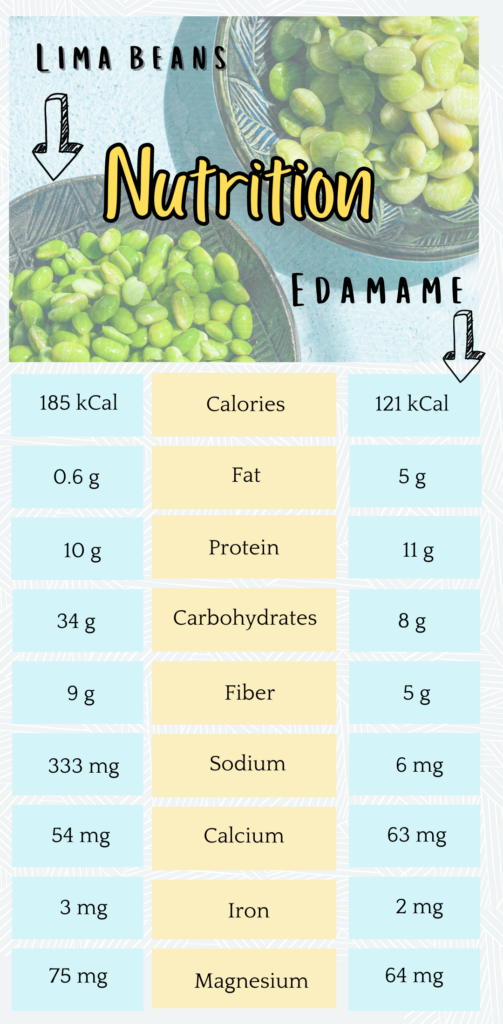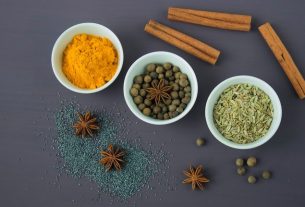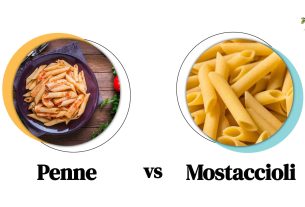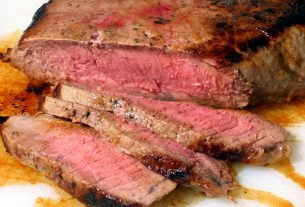Edamame vs.
soybeans: two contenders in the battle of the legumes.
Picture this: plump, vibrant green pods bursting with deliciousness, meeting your taste buds with a playful crunch.
Now, imagine a versatile bean, transformed into an array of soy-based wonders.
Both edamame beans and soybeans are protein powerhouses, calorie-conscious, and free of cholesterol.
But what sets them apart?
Join us as we unravel the tale of these two legume marvels and discover which one claims the ultimate victory for your palate and health.
edamame vs soybeans
Edamame beans are young and tender soybeans, typically eaten fresh and steamed, while mature soybeans are used to make various soy products.
Both edamame and soybeans are good sources of protein, with edamame providing 18.2 grams per 100 grams and mature soybeans containing 36.5 grams.
Edamame beans are low in calories, with 172 calories per 1/2 cup serving, while roasted soy nuts and whole raw soybeans have 449 calories.
Edamame beans also have a lower carbohydrate count, with 8.4 grams per 100 grams compared to about 30 grams in dry roasted soy nuts and whole raw soybeans.
Both edamame and soybeans are low in saturated fat and cholesterol-free, with raw soybeans containing 19.9 grams of total fat and edamame beans containing 9 grams.
Raw soybeans have higher amounts of essential minerals, including calcium, iron, potassium, magnesium, zinc, and selenium, compared to edamame beans.
However, edamame beans contain higher amounts of monounsaturated and polyunsaturated fats.
Both edamame and soybeans are high in fiber, with raw soybeans providing 37% of the daily value in a 1/2 cup serving and edamame beans contributing 24%.
Both foods also contain compounds like antioxidants and isoflavones, which have protective effects on the heart and potential positive effects on bone health.
Overall, edamame and soybeans offer similar nutritional benefits, but there are some differences in terms of protein, calories, fat, carbohydrates, and mineral content.
Key Points:
- Edamame beans are young and tender soybeans, typically eaten fresh and steamed.
- Edamame provides 18.2 grams of protein per 100 grams, while mature soybeans contain 36.5 grams.
- Edamame beans are lower in calories, with 172 calories per 1/2 cup serving, compared to roasted soy nuts and whole raw soybeans with 449 calories.
- Edamame beans have a lower carbohydrate count, with 8.4 grams per 100 grams, while dry roasted soy nuts and whole raw soybeans have about 30 grams.
- Edamame beans have 9 grams of total fat, while raw soybeans have 19.9 grams.
- Edamame beans contain higher amounts of monounsaturated and polyunsaturated fats compared to soybeans.
edamame vs soybeans – Watch Video


Pro Tips:
1. Edamame are actually young, tender soybeans that are harvested before they fully mature. They have a distinct sweet and slightly nutty flavor, making them a popular snack or addition to various dishes.
2. While soybeans are primarily grown for oil and protein production, edamame is usually consumed as a whole food, with the pod and beans both being boiled or steamed before consumption.
3. Edamame is believed to have originated in China around 200 BC. It later spread to other parts of Asia, including Japan, where it became a staple in their cuisine.
4. Edamame is an excellent source of plant-based protein and contains all nine essential amino acids required by the human body. This makes it a valuable food source, especially for individuals following a vegetarian or vegan diet.
5. The word “edamame” is actually a Japanese term that translates to “beans on branches.” This refers to the way edamame pods grow in clusters on the soybean plant.
1. Edamame Vs Soybeans: Harvested At Different Stages
Edamame beans and soybeans are actually the same plant, but they are harvested at different stages of growth. Edamame beans are picked when they are still young and tender, before they have hardened and matured. This early harvesting ensures that the edamame beans have a sweet and nutty flavor, as well as a soft and chewy texture.
On the other hand, soybeans are left to mature and harden on the plant. This allows the beans to develop a thicker and tougher outer shell. While the hardening process may make soybeans less desirable for fresh consumption, it actually enhances their suitability for various soy products.
- Edamame beans and soybeans are the same plant but harvested at different stages.
- Edamame beans are picked when young and tender.
- Provides a sweet and nutty flavor with a soft and chewy texture.
- Soybeans are left to mature and harden on the plant.
- Develop a thicker and tougher outer shell.
- Suitable for various soy products.
“Edamame beans and soybeans are actually the same plant, but they are harvested at different stages of growth.”
2. Edamame: Fresh And Steamed Vegetable
Edamame beans are typically enjoyed as a fresh steamed vegetable. They are often served as an appetizer or a side dish, either lightly salted or seasoned with various herbs and spices. The process of steaming preserves the natural colors, flavors, and nutrients of the beans, making them a delicious and nutritious addition to any meal.
The fresh and vibrant taste of edamame makes it a popular choice among health-conscious individuals. Its unique flavor profile pairs well with a variety of cuisines, making it a versatile ingredient in many recipes.
- Steamed edamame beans retain their natural colors, flavors, and nutrients.
- Edamame is a delicious and nutritious addition to any meal.
- The fresh and vibrant taste of edamame makes it popular among health-conscious individuals.
- Edamame can be seasoned with various herbs and spices to suit different tastes.
- Edamame is a versatile ingredient that pairs well with a variety of cuisines.
“Edamame beans are a fresh and healthy option that can be enjoyed as a steamed vegetable. Their vibrant taste and versatility make them a popular choice among health-conscious individuals.”
3. Soybeans: Matured And Hardened
While edamame beans are harvested when they are young and tender, soybeans are allowed to mature and harden on the plant. This maturity process causes the beans to become firm and dry, making them unsuitable for consumption in their raw form. However, their hardened texture makes them ideal for processing into various soy products.
Soybeans serve as the primary ingredient for soy products such as tofu, soy milk, and soy sauce. These products undergo different production processes that transform the soybeans into a wide range of culinary possibilities. The versatility of soybeans allows them to be included in both savory and sweet dishes, making them an essential component of many cuisines worldwide.
4. Edamame: Freshly Served Edible Delight
Edamame beans are best enjoyed fresh and promptly served after harvest. Their tender texture and delicate flavor are at their peak when properly cooked, preserving all the natural goodness they possess. Typically, the beans are lightly steamed or boiled until they become soft enough to be easily bitten into. Once cooked, they can be lightly seasoned to enhance their natural taste, making them a delightful snack or a nutritious side dish.
Edamame beans have become increasingly popular in Western cuisine, often appearing on menus at various restaurants and sushi bars. They can also be effortlessly prepared at home, serving as a nutritious and flavorful addition to any meal.
5. Soybeans: Versatile Ingredients For Soy Products
Soybeans and edamame beans differ in terms of their usage and processing methods. Soybeans are commonly transformed into a variety of soy products, renowned for their adaptability and nutritional value. These products include tofu, soy milk, soy sauce, tempeh, miso, and soy-based meat substitutes.
The process of creating these soy products usually involves soaking, grinding, and fermenting the soybeans. This extraction process leads to the development of diverse byproducts and extracts, resulting in a wide range of flavors, textures, and culinary possibilities. From smooth and creamy tofu to savory soy sauce, soybeans play a crucial role in these plant-based foods, which have become essential components of many vegetarian and vegan diets.
6. Protein Source: Edamame Vs Soybeans
Both edamame and soybeans are excellent sources of protein. Protein is an essential macronutrient that plays a vital role in our overall health and well-being. It is crucial for the growth, repair, and maintenance of tissues, as well as the production of enzymes and hormones.
- Edamame provides approximately 18.2 grams of protein per 100 grams. This makes it a valuable source of plant-based protein, especially for individuals following vegetarian or vegan diets.
- On the other hand, mature raw soybeans contain roughly 36.5 grams of protein per 100 grams, making them even more protein-dense than edamame beans.
Adding edamame or soybeans to your diet can help increase your protein intake, particularly for those seeking to incorporate more plant-based protein sources.
7. Caloric Comparison: Edamame Vs Soybeans
When comparing the caloric content of edamame beans and soybeans, it’s important to consider the serving size. Edamame beans have a relatively low calorie count, with approximately 172 calories per 1/2 cup serving. This makes them a healthy snack or side dish option for those mindful of their calorie intake.
In contrast, roasted soy nuts and whole raw soybeans contain significantly more calories, with about 449 calories per serving. These calorie-dense options are often enjoyed as a protein-rich snack or used as ingredients in various recipes.
8. Carbohydrate Content: Edamame Vs Soybeans
When it comes to carbohydrates, edamame beans have a lower count compared to soybeans. Edamame contains approximately 8.4 grams of carbs per 100 grams, while dry roasted soy nuts and whole raw soybeans contain around 30 grams of carbs.
The relatively lower carbohydrate content of edamame makes it suitable for individuals who follow low-carb or ketogenic diets. However, both edamame and soybeans provide valuable dietary fiber, which contributes to overall digestive health and enhances satiety.
- Edamame beans have lower carbohydrate count compared to soybeans.
- Edamame contains approximately 8.4 grams of carbs per 100 grams.
- Dry roasted soy nuts and whole raw soybeans contain around 30 grams of carbs.
- Suitable for individuals on low-carb or ketogenic diets.
- Edamame and soybeans provide dietary fiber for digestive health and satiety.
“The relatively lower carbohydrate content of edamame makes it suitable for individuals who follow low-carb or ketogenic diets.”
9. Fat Content: Edamame Vs Soybeans
Both edamame beans and soybeans are low in saturated fat and do not contain cholesterol. However, there is a notable difference in their total fat content.
- Raw mature soybeans contain approximately 19.9 grams of total fat per 100 grams.
- On the other hand, edamame beans contain approximately 9 grams of total fat per 100 grams.
It’s worth noting that the fat composition also differs between the two.
- Edamame beans contain 1,981 milligrams of monounsaturated fat and 5,064 milligrams of polyunsaturated fat per 100 grams.
- Raw soybeans contain 4,404 milligrams of monounsaturated fat and 11,255 milligrams of polyunsaturated fat per 100 grams.
The varying fat composition can have implications for the overall health benefits associated with these beans, particularly in relation to heart health and cholesterol management.
- Low in saturated fat
- No cholesterol
- Edamame beans: 9 grams of total fat per 100 grams
- Soybeans: 19.9 grams of total fat per 100 grams
- Edamame beans: 1,981 mg monounsaturated fat and 5,064 mg polyunsaturated fat per 100 grams
- Soybeans: 4,404 mg monounsaturated fat and 11,255 mg polyunsaturated fat per 100 grams
- Implications for heart health and cholesterol management
10. Mineral And Vitamin Variations: Edamame Vs Soybeans
Edamame beans and soybeans differ in their mineral and vitamin content. Raw soybeans have higher amounts of essential minerals compared to edamame beans. They contain higher percentages of calcium, iron, potassium, magnesium, zinc, copper, manganese, phosphorus, and selenium.
On the other hand, edamame beans contain relatively fewer amounts of thiamin, riboflavin, vitamin B5, vitamin B6, and folate compared to soybeans. However, both beans contribute essential nutrients to a well-balanced diet when consumed regularly.
- Raw soybeans have higher amounts of essential minerals.
- Soybeans contain calcium, iron, potassium, magnesium, zinc, copper, manganese, phosphorus, and selenium.
- Edamame beans have lower levels of thiamin, riboflavin, vitamin B5, vitamin B6, and folate compared to soybeans.
- Both beans are beneficial for a balanced diet.
11. Fiber Content: Edamame Vs Soybeans
Both edamame beans and soybeans are high in dietary fiber, which is crucial for maintaining a healthy digestive system. A 1/2 cup of raw soybeans contains approximately 37% of the daily value of fiber. This significant fiber content contributes to improved bowel regularity and can assist in managing weight through increased satiety.
Edamame beans also provide a substantial amount of fiber, contributing to 24% of the daily value in the same-sized serving. Including both edamame and soybeans in your diet can help you meet your daily fiber needs and support overall digestive health.
- High in dietary fiber
- Raw soybeans contain 37% of daily value of fiber
- Improved bowel regularity
- Can assist in weight management through increased satiety
- Edamame beans contribute 24% of daily value of fiber in the same-sized serving
12. Cholesterol-Lowering Potential: Edamame And Soybeans
The fiber content in soy-based products such as edamame and soybeans has been linked to potential cholesterol-lowering effects. Several studies have shown that consuming these beans and soy products can help decrease LDL cholesterol levels, which is often referred to as “bad” cholesterol.
The cholesterol-lowering potential of soybeans and edamame can be attributed to the presence of compounds such as saponins and isoflavones. These bioactive components are believed to interfere with the absorption of cholesterol in the intestines, preventing it from reaching the bloodstream and accumulating in artery walls.
Including edamame beans and soybeans in your diet as part of a heart-healthy eating plan may contribute to maintaining optimal cholesterol levels and reducing the risk of cardiovascular diseases.
- Soy-based products like edamame and soybeans have potential cholesterol-lowering effects.
- Studies have shown that consuming these products can help decrease LDL cholesterol levels.
- The cholesterol-lowering potential is due to compounds like saponins and isoflavones.
- These compounds interfere with cholesterol absorption in the intestines.
- Including edamame and soybeans in a heart-healthy diet can help maintain optimal cholesterol levels and reduce the risk of cardiovascular diseases.
13. Heart-Protective Compounds: Edamame And Soybeans
In addition to their cholesterol-lowering potential, edamame beans and soybeans contain other compounds that have protective effects on the heart. These include antioxidants, isoflavones, and lecithins.
Antioxidants help protect the body against oxidative stress, which can contribute to the development of chronic diseases, including cardiovascular disease. Isoflavones, in particular, have been of great interest due to their potential in improving heart health. These compounds have been associated with reduced inflammation, improved blood vessel function, and reduced risk of blood clot formation.
Lecithins, on the other hand, are known to support healthy cholesterol metabolism and have been shown to have beneficial effects on heart health.
By including edamame beans and soybeans in your diet, you can benefit from the heart-protective effects of these compounds and promote overall cardiovascular well-being.
- Edamame beans and soybeans have protective effects on the heart.
- Antioxidants protect against oxidative stress.
- Isoflavones improve heart health by reducing inflammation, improving blood vessel function, and reducing the risk of blood clot formation.
- Lecithins support healthy cholesterol metabolism.
- Including edamame beans and soybeans in your diet promotes overall cardiovascular well-being.
14. Bone Health Benefits: Edamame And Soybeans
Both edamame and soybeans are rich sources of valuable minerals that are essential for maintaining strong and healthy bones. These minerals include calcium, magnesium, phosphorus, and copper.
Calcium is widely recognized as a critical mineral for bone health, providing strength and structure to bones and teeth. Magnesium works in conjunction with calcium to support bone density, while phosphorus assists in bone mineralization. Copper, on the other hand, plays a key role in the formation of collagen, a crucial component of bone matrix.
Including edamame beans and soybeans in your diet can contribute to meeting your daily mineral requirements and supporting long-term bone health.
15. Potential Effects On Bone Formation: Edamame And Soybeans
Aside from the mineral content, soy isoflavones present in edamame and soybeans have shown potential positive effects on bone health. Isoflavones are compounds with estrogen-like activity, known as phytoestrogens. They have been shown to reduce bone resorption, the breakdown of bone tissue, and stimulate bone formation, leading to increased bone density.
Regular consumption of edamame beans and soybeans may be beneficial for individuals, particularly women, who are at a higher risk of developing osteoporosis, a condition characterized by low bone mass and increased fracture risk.
In summary, edamame and soybeans are both forms of soy, harvested at different stages of growth. While edamame beans are enjoyed as a fresh steamed vegetable, soybeans are primarily used to produce a wide range of soy products. Both beans offer valuable nutrition, with edamame providing a good source of protein, low calories, and carbohydrates, while soybeans possess higher amounts of minerals and vitamins. Both edamame and soybeans contribute to heart health, bone health, and overall well-being, making them excellent additions to a balanced and nutritious diet.
Benefits of Edamame and Soybeans:
- Soy isoflavones have positive effects on bone health
- Reduce bone resorption and stimulate bone formation
- Beneficial for individuals at higher risk of osteoporosis
Nutritional Value:
- Edamame: good source of protein, low in calories and carbohydrates
- Soybeans: higher amounts of minerals and vitamins
Both edamame and soybeans contribute to heart health, bone health, and overall well-being.

You may need to know these questions about edamame vs soybeans
Are soybeans and edamame the same?
No, soybeans and edamame are not the same. While edamame are actually young soybeans, harvested before they ripen or harden, they differ in their preparation and consumption. Edamame are usually enjoyed steamed or boiled in their green shell, providing a fresh and nutty flavor. On the other hand, soybeans are matured and commonly used in various forms, such as tofu, soy milk, or soy sauce. Both soybeans and edamame offer unique culinary experiences and nutritional benefits, but their distinction lies in their maturity and preferred methods of consumption.
Why are soybeans called edamame?
The term “edamame” originates from Japan and refers to immature green soybeans that are harvested before they fully ripen. The name “edamame” is a combination of two Japanese words: “eda” meaning “branch” or “stem,” and “mame” meaning “bean.” Historically, edamame beans were sold on stems, but these days, it is more common to find them sold as individual pods in markets.
Do soybeans have more protein than edamame?
Soybeans have higher protein content than edamame. A 100 gram serving of mature raw soybeans contains 36.5 grams of protein, which is 73 percent of the daily value. In comparison, a 100 gram serving of edamame provides 18.2 grams of protein, which is only 36 percent of the daily value. Therefore, soybeans have almost double the amount of protein compared to edamame, making them a more protein-rich option.
What kind of soybeans are in edamame?
The edamame pods contain young and tender soybeans that are bright green in color. These soybeans are specifically bred to have a sweeter taste and a more delicate texture compared to the fully matured, dried soybeans typically used for making tofu or soy milk. They are also known for their high protein content and are often enjoyed as a nutritious and satisfying appetizer or side dish.
Reference source
https://myloveearth.com/relationship-between-soybean—edamame
https://www.medicalnewstoday.com/articles/280285
https://www.kikkoman.com/en/culture/foodforum/close-up-japan/30-2.html
https://www.livestrong.com/article/447704-differences-between-soy-beans-edemame/



